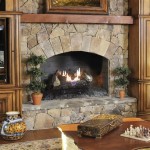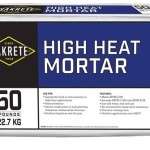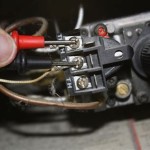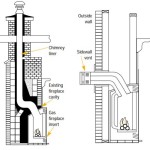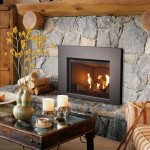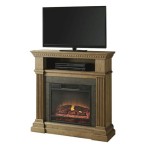Glowing Embers for Unvented Gas Fireplaces: A Comprehensive Guide
Unvented, or ventless, gas fireplaces offer a convenient and efficient heating solution for many homeowners. Unlike traditional fireplaces that require a chimney for exhaust, unvented models release heat directly into the room. A key component contributing to the visual appeal and realistic flame effect of these fireplaces is the use of glowing embers. This article provides a detailed understanding of glowing embers for unvented gas fireplaces, covering their purpose, types, installation, safety considerations, and maintenance.
Glowing embers in unvented gas fireplaces serve both aesthetic and functional roles. Aesthetically, they enhance the realism of the flame by mimicking the appearance of a natural wood-burning fire. The subtle, radiant glow emanating from the embers creates a warm and inviting atmosphere. Functionally, they contribute to heat distribution and help to maintain a consistent flame pattern. The embers provide a surface for the gas to burn more efficiently, resulting in a more complete combustion process.
The selection of appropriate glowing embers for an unvented gas fireplace is crucial for optimal performance and safety. Incorrect ember types can lead to inefficient burning, carbon monoxide production, and potential equipment damage. Therefore, understanding the different types of embers available and their respective characteristics is paramount.
Types of Glowing Embers for Unvented Gas Fireplaces
Several types of glowing embers are available for unvented gas fireplaces, each with its own specific composition and performance characteristics. The most common types include ceramic fiber embers, rock wool embers, and lava rock embers. Choosing the correct type depends on the specific fireplace model and manufacturer recommendations.
Ceramic Fiber Embers: These are typically made from a high-temperature ceramic material. Ceramic fiber embers offer excellent heat resistance and are designed to glow intensely when exposed to the gas flame. They are lightweight and porous, allowing for efficient gas diffusion and combustion. Ceramic fiber embers are relatively durable and resistant to degradation, providing a long lifespan with proper care. Their bright, orange glow is often preferred for creating a vibrant fire appearance.
Rock Wool Embers: Constructed from spun rock fibers, these embers offer a more subtle and natural glow compared to ceramic fiber embers. Rock wool embers tend to have a more subdued, reddish-orange hue. They possess good heat retention properties and contribute to a more even distribution of heat within the fireplace. Rock wool embers are generally more fragile than ceramic fiber embers and may require more frequent replacement. However, their affordability and natural appearance make them a popular choice.
Lava Rock Embers: While primarily used as a base material in some gas fireplaces, lava rock can also be used as glowing embers. Lava rock embers are made from volcanic rock and have a porous structure that allows for gas to permeate and burn. They offer a more rustic and natural appearance. Lava rock embers are highly durable and can withstand high temperatures. However, they may not glow as intensely as ceramic fiber or rock wool embers. Lava rock is often used in conjunction with other ember types to achieve a more realistic and varied fire effect.
It is important to consult the fireplace manufacturer's instructions to determine the recommended type of glowing embers for a specific model. Using unauthorized embers can potentially compromise the fireplace's performance and safety characteristics.
Installation and Placement of Glowing Embers
Proper installation and placement of glowing embers are essential for achieving a realistic flame effect and ensuring safe operation of the unvented gas fireplace. Incorrect placement can lead to uneven burning, soot production, and potential hazards. The following guidelines provide a comprehensive overview of the installation process.
Preparation: Before installing the glowing embers, ensure that the gas fireplace is turned off and completely cool. Clean the burner area thoroughly to remove any debris, dust, or soot. Refer to the manufacturer's instructions for specific cleaning recommendations. Verify that the gas supply is turned off to prevent accidental gas leaks. Wear gloves to protect your hands from potential irritants or sharp edges.
Placement: Carefully arrange the glowing embers over the burner area, following the manufacturer's instructions. Typically, the embers should be placed around and slightly over the burner ports, but not directly blocking them. Avoid overcrowding the burner area with embers, as this can restrict airflow and lead to incomplete combustion. Allow for ample space around the burner ports for the gas to ignite and burn efficiently. The goal is to create a realistic ember bed that glows evenly when the fireplace is in operation.
Distribution: Distribute the embers evenly across the burner area to achieve a consistent flame pattern. Avoid creating large clumps of embers in one area, as this can lead to uneven heat distribution and a distorted flame appearance. The embers should be arranged in a way that resembles a natural wood-burning fire, with varying sizes and shapes strategically placed to create depth and dimension. Consider the aesthetic appeal of the ember arrangement and adjust the placement as needed to achieve the desired visual effect.
Testing: After installing the embers, carefully turn on the gas supply and ignite the fireplace. Observe the flame pattern and ember glow to ensure that the fireplace is operating correctly. If the flame is uneven or the embers are not glowing properly, adjust the ember placement as needed. Allow the fireplace to run for a few minutes to warm up and observe any changes in the flame appearance or ember glow. Make any necessary adjustments to optimize the fireplace's performance.
Safety Considerations and Maintenance
Safety is paramount when operating an unvented gas fireplace. Regular maintenance and adherence to safety guidelines are crucial for preventing accidents and ensuring the long-term performance of the appliance. The following considerations outline important safety protocols and maintenance practices.
Carbon Monoxide Detection: Unvented gas fireplaces produce small amounts of carbon monoxide (CO) as a byproduct of combustion. While modern models are designed to minimize CO emissions, it is essential to install a working carbon monoxide detector in the vicinity of the fireplace. Test the CO detector regularly to ensure that it is functioning properly. If the CO detector alarms, immediately ventilate the area and contact a qualified professional for inspection and repair.
Ventilation: Although unvented gas fireplaces do not require a chimney, it is still important to provide adequate ventilation in the room. Open a window or door slightly to allow for fresh air circulation. This helps to prevent the buildup of moisture and contaminants in the air. Follow the manufacturer's instructions regarding ventilation requirements for the specific fireplace model.
Cleaning: Clean the gas fireplace regularly to remove any dust, debris, or soot. Use a soft brush or vacuum cleaner to gently clean the burner area and remove any accumulated residue. Avoid using harsh chemicals or abrasive cleaners, as these can damage the fireplace components. Inspect the glowing embers for any signs of wear or degradation. Replace the embers as needed to maintain optimal performance and appearance.
Professional Inspection: Schedule regular professional inspections of the gas fireplace to ensure that it is operating safely and efficiently. A qualified technician can inspect the burner, gas lines, and other components for any signs of wear or damage. They can also perform a combustion analysis to verify that the fireplace is burning cleanly and efficiently. Regular professional inspections can help to identify potential problems early on and prevent costly repairs.
In summary, glowing embers are a critical component of unvented gas fireplaces, contributing to both their aesthetic appeal and functional performance. Understanding the different types of embers, proper installation techniques, and safety considerations is essential for ensuring a safe and enjoyable fireplace experience. By following these guidelines, homeowners can maximize the benefits of their unvented gas fireplace and create a warm and inviting atmosphere in their homes.

Glowing Embers In A Fireplace Magic Touch Mechanical

Glowing Embers For Fireplace Mother Daughter Projects

Glowing Embers For Fireplace Mother Daughter Projects

Frienda Glowing Embers Rock Wool Mixed With Vermiculite 44 Off

Gas Log Replacement Elegant Fiber Glowing Embers Rock Wool 4 Oz Bag New Gef100

Superior Fge Standard Glowing Embers Fireplace Media

Pleasant Hearth Vented Or Vent Free Gas Log Embers In The Fireplace Accessories Department At Com

Platinum Glowing Bright Embers For Gas Logs

Pleasant Hearth Vented Or Vent Free Gas Log Embers In The Fireplace Accessories Department At Com

Barton 6 Oz Rock Wool Glowing Embers For Gas Fireplace Logs With Vermiculite Granules 95055 H The Home Depot
Related Posts

